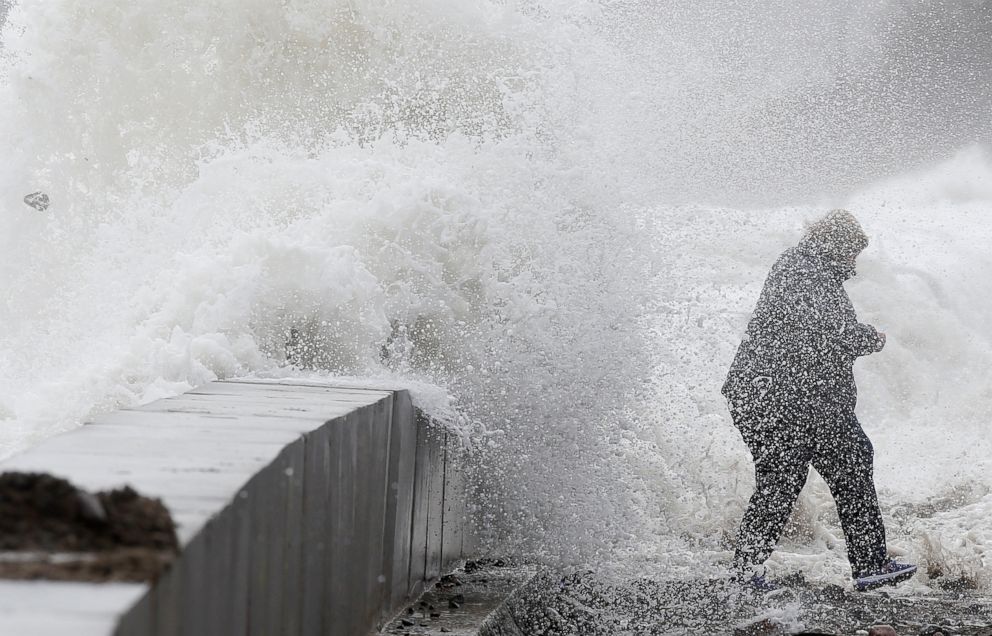Nor'easter unearths skeleton of nearly 250-year-old shipwreck in Maine
The ship is estimated to have been built in the 18th century.
— -- The powerful nor'easter that pummeled the Atlantic coast last week unearthed the skeleton of a shipwreck that occurred nearly 250 years ago on a beach in Maine.
The Short Sands Shipwreck -- named after the beach in York where the vessel met its demise -- appears to have been built in the 18th century and likely ran aground during rough seas around 1769, before the Revolutionary War, Leith Smith, historical archaeologist for the Maine Preservation Commission, told ABC News.
What's left of the 60-foot ship is often exposed after a big storm hits, most recently, in 2013 and 2007, when measurements and wood samples were taken to give historians a clue to its past.
Before then, other notable dates in which the ship was exposed were in 1978 and 1958, but it's likely that a "few timbers may have been poking through the sand" in between, Smith said.
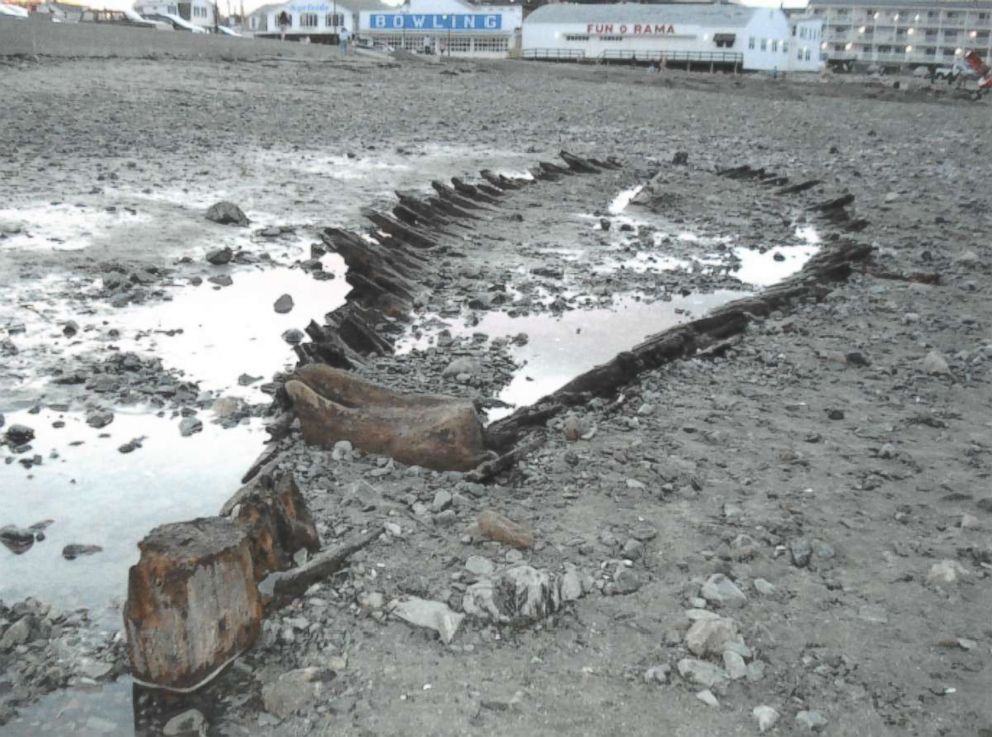
After the storm passes, it usually takes just a few weeks to a month for the wreck to become re-buried, Smith said.
Archaeologists believe the ship was constructed in or near Maine based on the different types of wood that were used -- including balsam fur, yellow birch, beech, red pine and white oak -- all trees native to the Pine Tree state. The vessel, determined to be a pink sailing boat, a flat-bottomed ship -- was a "very common" coastal-running ship used for trade up and down the Atlantic coast at the time of the wreck, Smith said.
"Basically, think of it as the tractor-trailer of its day, loading goods, sailing quickly to port, and filling up again," Smith said.
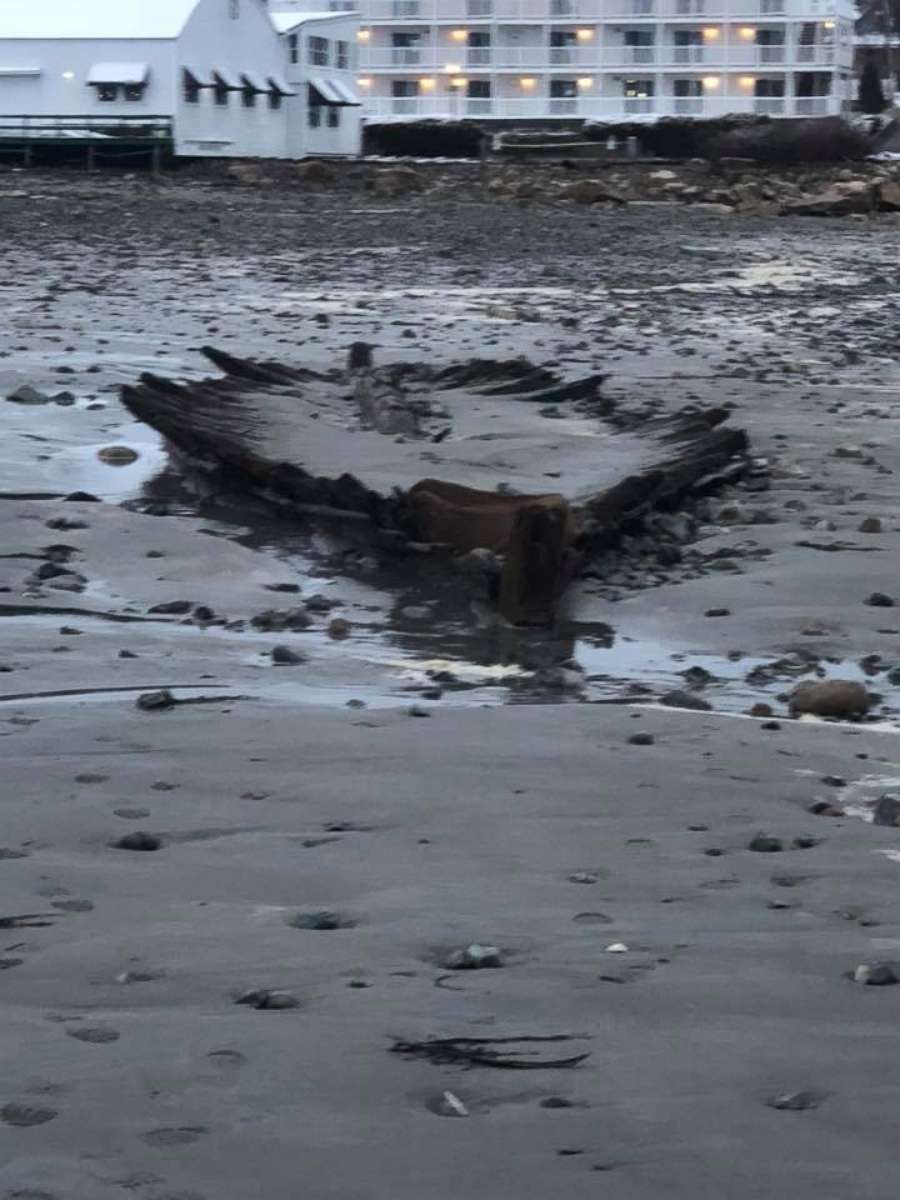
The ship likely carried materials such as lumber, flour and raw materials for blacksmiths, with the exception of coal, which was transported on much-larger sailing ships, Smith said.
Analysis of the ship shows that "a number of timbers" were cut off the ship, evidence that the upper portion was salvaged and used for anything from souvenirs to firewood to wood for building homes, Smith said.
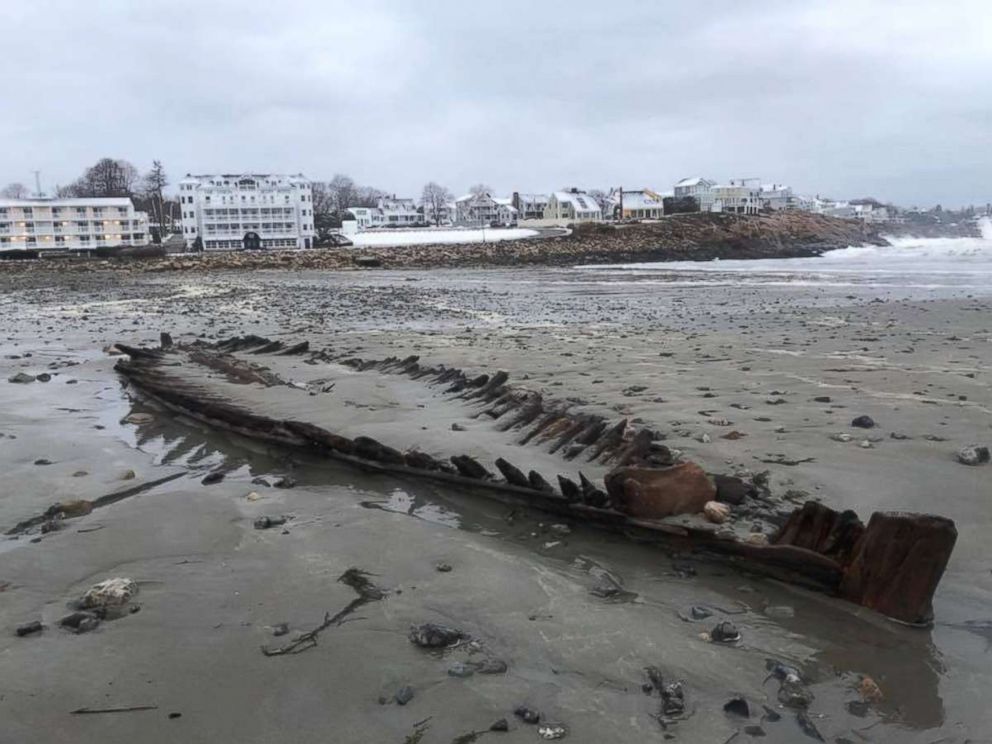
The shipwreck is well known among local residents, who remain "respectful" of the piece of history, which belongs to the state of Maine, Smith said. The inquiry the commission receives most often in regards to the ship is why efforts aren't being made to preserve it.
"In the end, the actual environment that it's in -- in the sand and wet all the time -- it's probably one of the best ways to preserve it" due to the lack of oxygen, Smith said.
In addition, the expense of conservation far outweighs the historical value of the ship, which remains nameless due to the "literally hundreds of thousands of ships that are known to have wrecked, disappeared" up and down the coast of Maine, Smith said.
"Maybe a famous ship from the Revolutionary War -- that would be a reason to take it out and save it," he said.
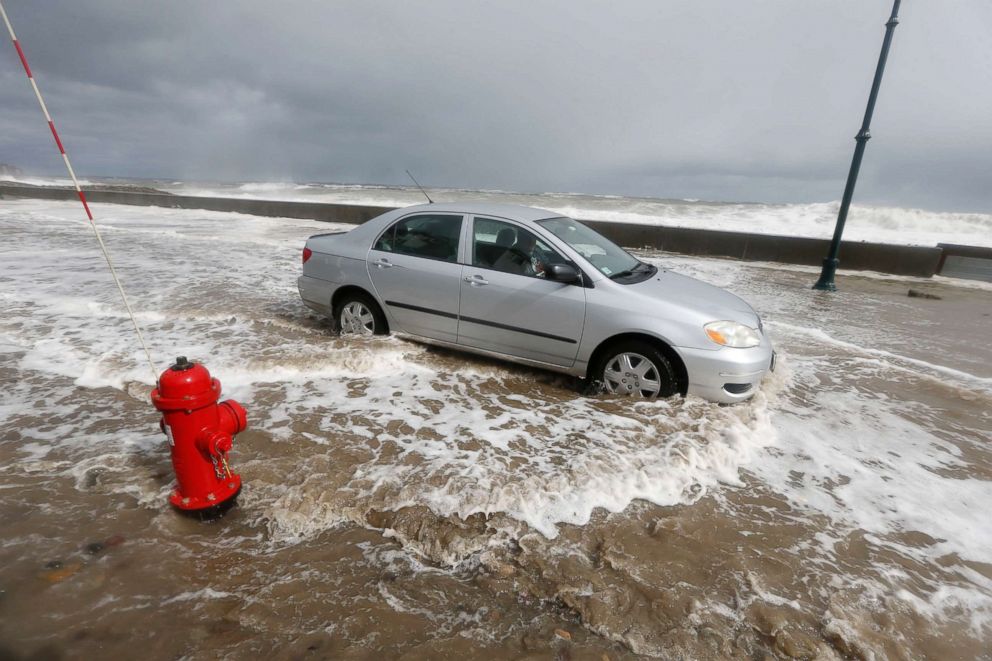
At least seven people were killed by falling trees during Friday's nor'easter, which brought snow, freezing rain and flooding to several states from the Carolinas to Maine.
